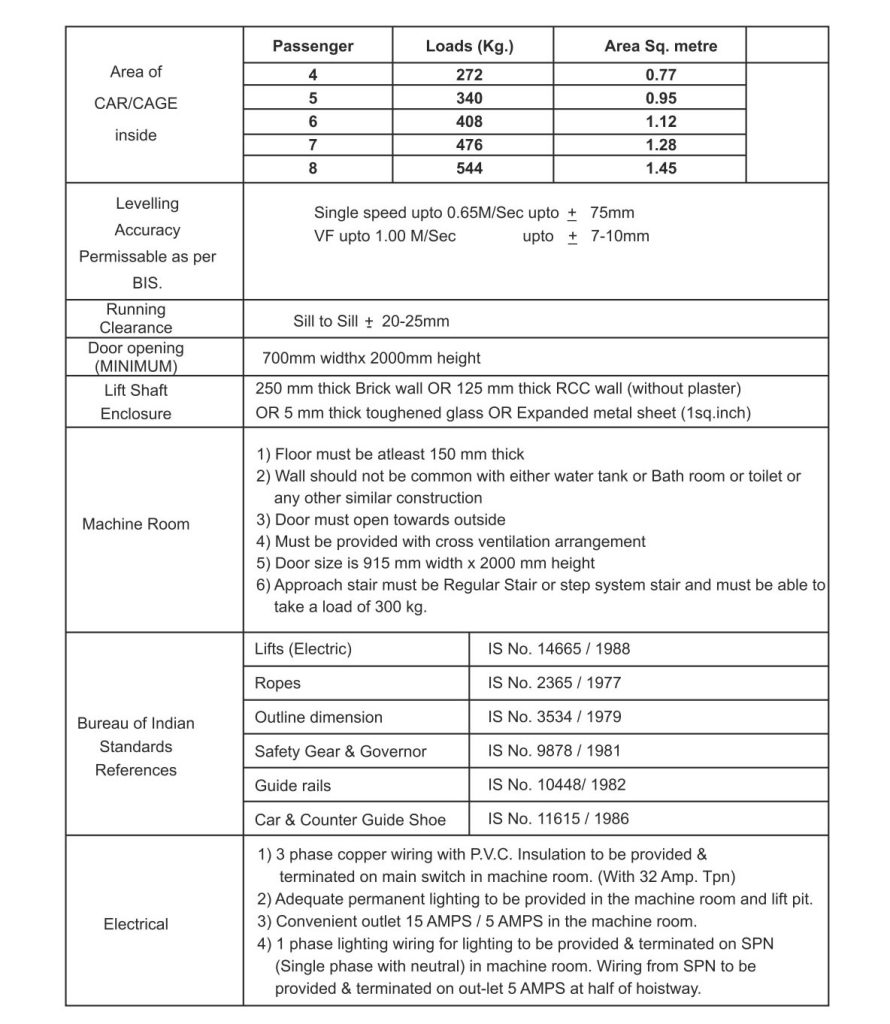Home / Features
A firm, stable, and sturdy scaffolding erected in the hoistway. Technicians become more confident when they step onto a strong scaffolding. Their fear of falling is greatly reduced and they can concentrate better on giving you a quality job faster.
Barriers should be provided across all open entrances in the form of 3 strips at 42", 18" and a toe board 4" in height. An adequate barrier will save any curious passerby or technicians from accidentally walking into and falling down an unguarded hoistway - Avoid chance of fatal accident.
In case there is more than one elevator in a common lift well, a Teparator screen should be provided between the two elevator hoistways. This could be either of masonry construction or a wiremesh stretched between the separator beams. Note: In case of a "Fire Lift", the separator must be a masonry wall. This minimises the risk of any elevator component accidently protruding into the adjacent hoistway where the other elevator is running.
Properly earthed lighting arrangements to be provided in the hoistway in the form of 230V-100W bulkhead fittings at each floor level with its switch in the machine-room. The pit light should be controlled individually by a switch accessible from ground floor entrance. The line to the midway junction box which feeds the car light should also be controlled by a switch provided in the machine-room. Visibility in the hoistway is very poor especially when landing doors are of the panel type. Emergency repairs take much longer where lighting is inadequate.
A Steel Ladder should be provided in the pit for convenient access. The ladder must extend to atleast 1' above the lowest landing as indicated in the illustration. Pit-Light Switch & Pit-Stop must be accessible from entrance. A strong ladder is required to provide safe access to the pit to work on the elevator and to carry out routine maintenance of elevator components located in the pit.
The elevator pit well must be thoroughly water proofed. If water enters the pit well it could render the travelling cables unsafe and also cause the other equipment to rust. Water in the electrical cables can cause serious malfunctioning of the elevator and result in heavy repair bills.
In the construction stage, access to the elevator and its adjacent working areas must be safe at all times. There should be no tripping hazards, loose hanging electrical wires or danger from any falling objects. Accidents to technicians could prove to be fatal and lead to legal complications. •Serious injuries to technicians at the erection stage could disrupt installation and job completion schedules of the elevator. Such delays are better avoided for obvious reasons.
Basic Amenities like safe drinking water and reasonable toilet facilities for technicians working at site must be provided. Adequate measures to control the menace of mosquitoes must also be taken. In the absence of safe drinking water, technicians are prone to fall ill. Contaminated water could lead to dangerous diseases. Presence of mosquitoes may cause malaria. If adequate toilet facilities are not provided technicians may have no alternative but to use corners and niches - rendering the site highly unhygenic.
REMEMBER THE ELEVATOR IS FOR YOUR CONVENIENCE
PROPER HANDLING WILL ENSURE TROUBLE AND
ACCIDENT FREE SERVICE


890, N.S. Road, Lal Gate, Opp. Hyundai Service Station, Narendrapur, Kolkata – 700103
8335019500
geecommmercial@gmail.com
© 2024 GEE Elevators | All Rights Reserved.